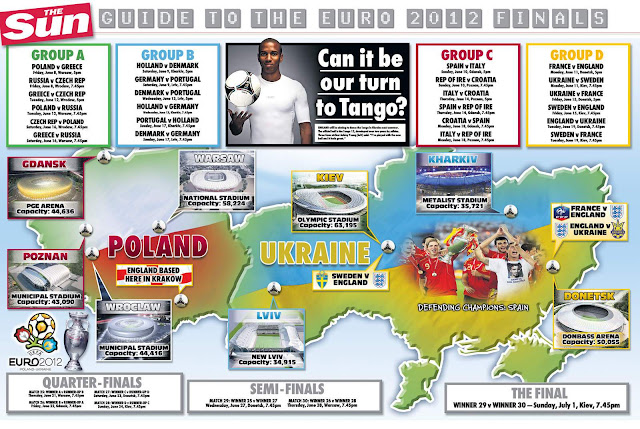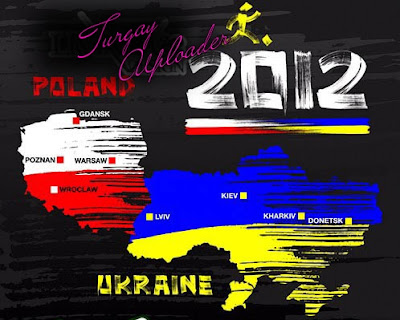Earlier this summer while I was in Michigan I had the opportunity to visit with two of my mentors, Dr. Harlan Ritchie and his wife Dr. Leah Ritchie. A few days later Matt Lautner emailed me and asked if I could help him find something really cool to publish in his online handbook for 2012. I immediately thought of a presentation by Dr. Harlan Ritchie that he developed at Michigan State University. I asked Leah if she would mind if we adapted it for this publication and she said go for it! If you missed it in the Matt Lautner online handbook, here is the presentation again.
A History of Types of Show Steers
Adapted from Dr. Harlan Ritchie’s “Historical Review of Cattle Type” presentation,
Distinguished Professor of Animal Science, Michigan State University
Purple banners are the goal of every person in the club calf business. Every young showman dreams of claiming their spot at the backdrop. Every breeder spends thousands of ours contemplating mating decisions to produce that perfect show steer. Every judge studies and rationalizes each decision in order to select winners that best fit the beef industry.
Since early cattle show competitions of the 1700s, these dreams and visions of purple banners have not changed. However, the cattle being bred to win these banners have drastically changed, evolved, and improved to meet the visual and conformations standards set by both breeders, judges, and the beef industry.
Early History of Cattle Breeding
Early cattle in the United States and Europe were used primarily for draft and milk. They were extremely large framed, late maturing, light muscled, and slow to finish. They were only used for meat consumption purposes when they were too old to work or produce milk.
During the mid 1800s, most cattle in the western U.S. were native cattle that were primarily Longhorn type. After the Civil War, dual purpose Shorthorn bulls were introduced out West and began crossbreeding with the native cattle to improve milk and meat production. Hereford bulls took over in the late 1870s. Angus came later. The Shorthorn, Hereford, and Angus breed associations were formed during 1881-1883 and Polled Hereford in 1900. The British breeds had found their place in the U.S. beef industry.
20th Century Cattle Breeding
Beginning in the early 1900s through the 1930s, cattle breeders gradually began moving towards breeding smaller framed cattle that were earlier maturing and thicker, in hopes that these cattle would be able to finish at a younger age and lighter weight.
From the mid-1930s to the mid 1950s, this trend greatly intensified, with breeders, judges, and packers putting a large amount of selection pressure towards producing the earlier maturing, smaller framed cattle. During this time, terms like “baby beef,” “compact cattle” and “comprest cattle” came into use. Show winners across the country were small in frame, usually only reaching the belt buckle of the exhibitor. Advertisements of the early 1950s featured small, “belt buckle cattle” that would classify by today’s standards of less than a frame score 1. One advertisement from 1949 advertised a certain animals as the “biggest bull at the show”…however he was only a frame score 2.0.
Beef cattle historians know all too well how this trend ended: dwarfism. Breed associations and breeders took extraordinary steps to deal with and eventually eradicate dwarfism. Cattle size and type tended to stabilize from 1955 to 1960. During the 1960s, breeders began to select for increased size, but were not able to make much progress with the bloodlines they were using at the time.
Following World War II, consumers began demanding grain-fed beef, thus starting the commercial feedlot industry. However, commercial feed yards were having trouble feeding cattle to an acceptable slaughter weight to grade choice without getting them overly fat. To address this issue, U.S.D.A. initiated yield grading in 1965, and the industry began searching for cattle that could be carried to desired slaughter weights without getting too fat. Enter the Charolais cross steer, who became very popular with breeders, feeders and packers for their rapid gains and high cutability.
1969: A Pivotal Year for The Show Steer Business
The cattle industry was forever changed in 1969. The Hereford, Angus, and Charolais associations began sponsoring type conferences in 1969 to evaluate the performance of cattle that varied in frame size within their respective breeds. These type conferences eventually led to the development of the new U.S. feeder cattle grades, adopted in 1979, which identify visual standards for small, medium, and large frame cattle. Many breed associations also revised their ‘ideal standards’ for frame size to update their standards from the smaller framed models of the 1960s.
At the 1969 International Show in Chicago, Dr. Don Good of Kansas State University selected Conoco, a Charolais x Angus steer, as the grand champion steer of the show. This made Conoco the first crossbred winner of a major steer show of modern times. He weighed 1250 pounds, quality graded Choice, and yield graded 2, and would still be considered outstanding today.
That same year, Dr. Robert Totusek of Oklahoma State University selected “Great Northern” as the Grand Champion Angus bull of the International Show. Great Northern was a Canadian bull that was larger framed, trimmer, and heavier muscled than any Angus bull of the time. The selection of these two winners at the biggest show in the nation helped set the new trend in cattle breeding.
Upward Trends in Frame Size Spread like Wildfire
In the early to mid 1970s, there were a number of outstanding champion steers exhibited at the major shows that produced great carcasses on the rail, aligning the show ring with the beef industry. However, size was beginning to get out of control at many steer shows.
Some steers of this time were exceptional in their cutability but were too lean and lacked body capacity. By the early 1980s, some show steers were taller than their exhibitors. Many champions at Denver and Louisville during the late 1980s were frame score 10.0 or higher.
Selection for increased size spread like wildfire from 1960 to 1988. However, four significant events of this time led to the next type change, towards more moderate framed steers, which we still see today.
In January 1986, the National Consumer Retail Beef Study shows that consumers wanted beef that was leaner and lower in fat. In April 1987, Excel meat packers announced new specifications for buying cattle that put more emphasis on muscle thickness. Excel’s specs presented a 1,270 pound steer as being near ideal in his muscle thickness along with enough finish to grade low Choice. In May 1988, the National Beef Conference established recommendations for moderating frame size and increasing muscle thickness in beef cattle. In December 1991, the National Beef Quality Audit revealed numerous shortfalls in the U.S. beef carcasses.
Following these recommendations from the industry, steer shows began to also reflect a change in their cattle type. In 1988, the Denver champion steer weighed 1,272 pounds and had an outstanding carcass with .35 inch back fat, a 15.0 square inch rib eye, U.S.D.A. Choice quality grade, and yield grade of 1.8. In 1993, the Houston Livestock Show implemented a slick shear steer show in which cattle could not have more than ¼ inch of hair. Other major shows, especially in the south, followed suit. By 1994, breed champions at Denver had down-sized from frame scores of 10.0 in the late 1980s to frame scores of 6.0 and 7.0.
Today’s Ideal Show Steer
Since 1988, the show steer industry and the entire beef industry has placed increased emphasis on carcass traits and structural soundness. Judges continue to select for cattle that are moderate framed and will finish at an acceptable weight with a high quality carcass. In 2012, the Grand Champion Steer at Houston had a live weight of 1,288 pounds, graded U.S.D.A. Choice with a yield grade of 2. Though the industry has experienced its ups and downs (no pun intended), it appears that for the last 20 years, cattle type has stabilized with a common goal of increased emphasis on optimal frame, optimal muscle, and high quality carcasses to meet the demands of the feedlot, packer, and consumer.
-Adapted by Rachel Cutrer
A History of Types of Show Steers
Adapted from Dr. Harlan Ritchie’s “Historical Review of Cattle Type” presentation,
Distinguished Professor of Animal Science, Michigan State University
Purple banners are the goal of every person in the club calf business. Every young showman dreams of claiming their spot at the backdrop. Every breeder spends thousands of ours contemplating mating decisions to produce that perfect show steer. Every judge studies and rationalizes each decision in order to select winners that best fit the beef industry.
Since early cattle show competitions of the 1700s, these dreams and visions of purple banners have not changed. However, the cattle being bred to win these banners have drastically changed, evolved, and improved to meet the visual and conformations standards set by both breeders, judges, and the beef industry.
Early History of Cattle Breeding
Early cattle in the United States and Europe were used primarily for draft and milk. They were extremely large framed, late maturing, light muscled, and slow to finish. They were only used for meat consumption purposes when they were too old to work or produce milk.
During the mid 1800s, most cattle in the western U.S. were native cattle that were primarily Longhorn type. After the Civil War, dual purpose Shorthorn bulls were introduced out West and began crossbreeding with the native cattle to improve milk and meat production. Hereford bulls took over in the late 1870s. Angus came later. The Shorthorn, Hereford, and Angus breed associations were formed during 1881-1883 and Polled Hereford in 1900. The British breeds had found their place in the U.S. beef industry.
 |
| 1867. “Black Prince.” Angus steer. Champion at prestigious Smithfield show at four years of age. Weighed 2200 lb. It was said,“a short man would need a ladder to see his back.” |
20th Century Cattle Breeding
Beginning in the early 1900s through the 1930s, cattle breeders gradually began moving towards breeding smaller framed cattle that were earlier maturing and thicker, in hopes that these cattle would be able to finish at a younger age and lighter weight.
 |
| 1932. “Campus Model.” Grand Champion Steer, 1932 Michigan State Fair. He weighed 1150 lbs |
 |
| 1932. “Texas Special.” Grand Champion Steer, International, 1932. He weighed 1240 lbs. at 19 mos. |
 |
| 1945. “TO Model.” Grand Champion Steer, Denver, 1945. He weighed 965 lbs. The TO cattle were cextremely small framed and early maturing, and became popular during the early 1940s and 50s. |
Beef cattle historians know all too well how this trend ended: dwarfism. Breed associations and breeders took extraordinary steps to deal with and eventually eradicate dwarfism. Cattle size and type tended to stabilize from 1955 to 1960. During the 1960s, breeders began to select for increased size, but were not able to make much progress with the bloodlines they were using at the time.
Following World War II, consumers began demanding grain-fed beef, thus starting the commercial feedlot industry. However, commercial feed yards were having trouble feeding cattle to an acceptable slaughter weight to grade choice without getting them overly fat. To address this issue, U.S.D.A. initiated yield grading in 1965, and the industry began searching for cattle that could be carried to desired slaughter weights without getting too fat. Enter the Charolais cross steer, who became very popular with breeders, feeders and packers for their rapid gains and high cutability.
1969: A Pivotal Year for The Show Steer Business
The cattle industry was forever changed in 1969. The Hereford, Angus, and Charolais associations began sponsoring type conferences in 1969 to evaluate the performance of cattle that varied in frame size within their respective breeds. These type conferences eventually led to the development of the new U.S. feeder cattle grades, adopted in 1979, which identify visual standards for small, medium, and large frame cattle. Many breed associations also revised their ‘ideal standards’ for frame size to update their standards from the smaller framed models of the 1960s.
At the 1969 International Show in Chicago, Dr. Don Good of Kansas State University selected Conoco, a Charolais x Angus steer, as the grand champion steer of the show. This made Conoco the first crossbred winner of a major steer show of modern times. He weighed 1250 pounds, quality graded Choice, and yield graded 2, and would still be considered outstanding today.
 |
| 1969. “Conoco.” Grand Champion Steer, International. A Charolais-Angus crossbred steer, the first crossbred winner of a modern major shows. |
Upward Trends in Frame Size Spread like Wildfire
In the early to mid 1970s, there were a number of outstanding champion steers exhibited at the major shows that produced great carcasses on the rail, aligning the show ring with the beef industry. However, size was beginning to get out of control at many steer shows.
Some steers of this time were exceptional in their cutability but were too lean and lacked body capacity. By the early 1980s, some show steers were taller than their exhibitors. Many champions at Denver and Louisville during the late 1980s were frame score 10.0 or higher.
 |
| 1984. Grand Champion Steer, Houston. By the early 1980’s, some champion steers were taller than their exhibitors. |
Selection for increased size spread like wildfire from 1960 to 1988. However, four significant events of this time led to the next type change, towards more moderate framed steers, which we still see today.
In January 1986, the National Consumer Retail Beef Study shows that consumers wanted beef that was leaner and lower in fat. In April 1987, Excel meat packers announced new specifications for buying cattle that put more emphasis on muscle thickness. Excel’s specs presented a 1,270 pound steer as being near ideal in his muscle thickness along with enough finish to grade low Choice. In May 1988, the National Beef Conference established recommendations for moderating frame size and increasing muscle thickness in beef cattle. In December 1991, the National Beef Quality Audit revealed numerous shortfalls in the U.S. beef carcasses.
 |
| 1988. Grand Champion Steer, Denver |
 |
| 2012. Grand Champion Steer, Houston |
Since 1988, the show steer industry and the entire beef industry has placed increased emphasis on carcass traits and structural soundness. Judges continue to select for cattle that are moderate framed and will finish at an acceptable weight with a high quality carcass. In 2012, the Grand Champion Steer at Houston had a live weight of 1,288 pounds, graded U.S.D.A. Choice with a yield grade of 2. Though the industry has experienced its ups and downs (no pun intended), it appears that for the last 20 years, cattle type has stabilized with a common goal of increased emphasis on optimal frame, optimal muscle, and high quality carcasses to meet the demands of the feedlot, packer, and consumer.
-Adapted by Rachel Cutrer




































